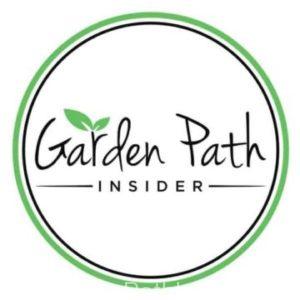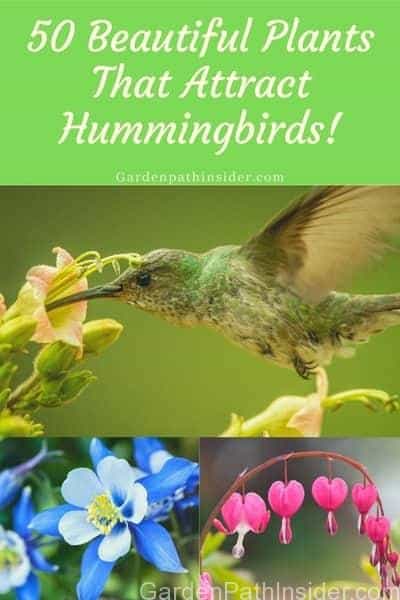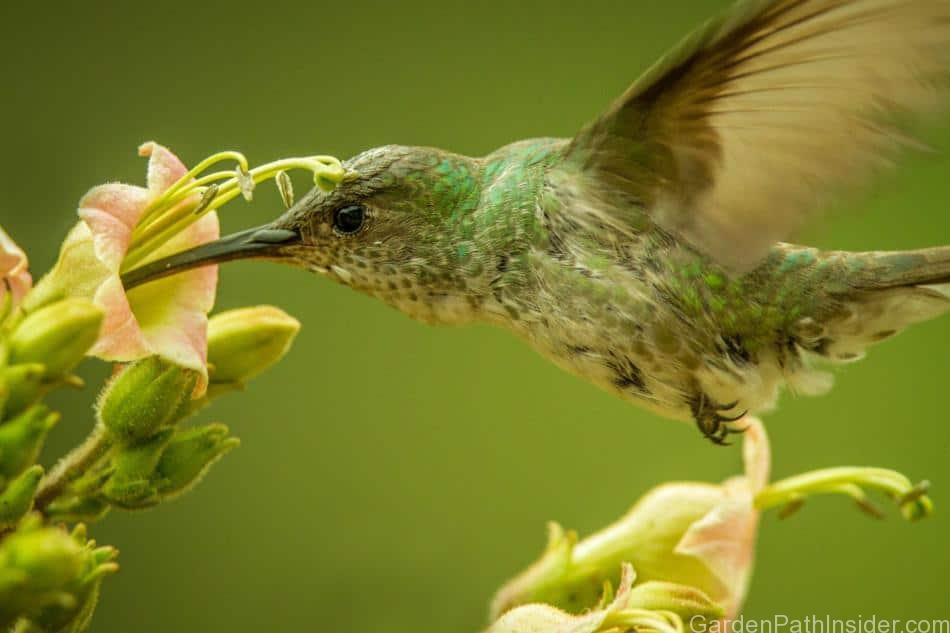
Hummingbirds are wonderful pollinators to attract to your yard. Once you plant your first hummingbird garden you will be amazed to discover how many hummingbirds are living in your own backyard.
Hummingbirds feed on nectar and small insects. They drink nectar from colorful blooming flowers on plants, shrubs, and trees. The shrubs and trees are also used for shelter. Hummingbird gardens contain nectar-producing plants that bloom throughout the season. Nectar feeders are always a welcome supplement for the birds if blooms are not available.
The list below provides a variety of options for your hummingbird garden. Below you will find perennials, annuals, shrubs, drought tolerant, and even trees, to help as you plan your hummingbird garden.
Hummingbird gardens are a lot of fun to create as the nectar-producing flowers hummingbirds feed on, are always colorful and showy.
Larger shrubs and trees are also a great addition to a hummingbird garden as the birds can take shelter there when they are nesting or experiencing torpor.
Torpor is an extreme state the birds enter into when there is not a sufficient supply of nectar available. The bird’s heart rate slows way down, and their feet lock around a branch so the hummingbirds can hang upside down until they wake up and are able to find food again. This is a great reason to also add nectar feeders to your hummingbird garden, to supplement the birds during periods between flower blooms.
The below selection of beautiful nectar-producing plants includes key plant details to help you design your dream hummingbird garden.
As with any new addition to your garden, make sure to research the local laws and regulations when adding a new species to the local ecosystem.
Some of the plants below are toxic if consumed, and some of the plants below are classified as invasive in some states and countries but not in others. Always check with your local governing body first.
Cover image details: Hummingbird – Amazilia viridicauda, drinking nectar from the blossom._© Jiri Hrebicek /123rf.com
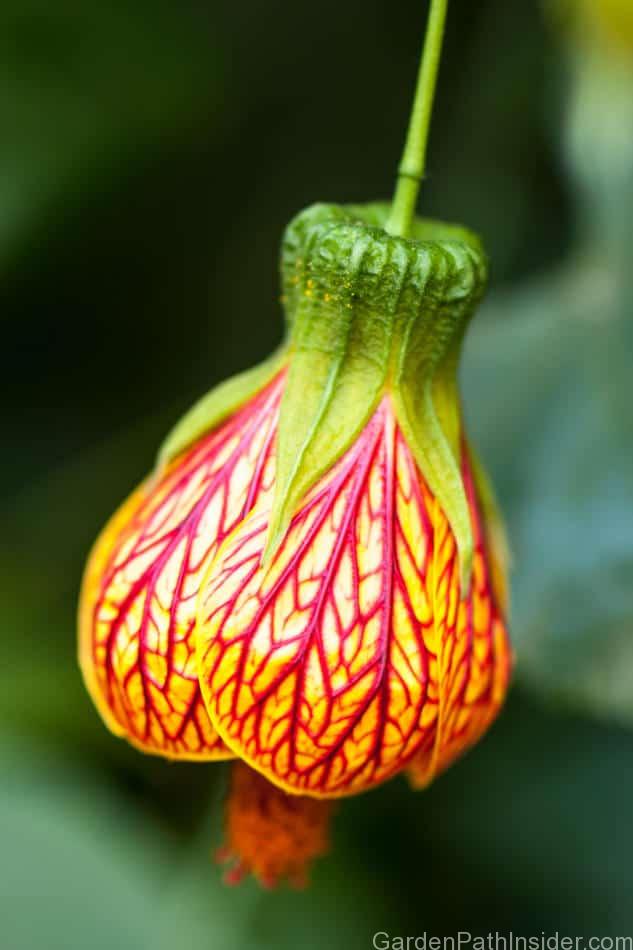
| Abutilon | |
| Name: | Flowering Maple |
| Binomial Name: | Abutilon |
| Life Cycle: | Perennial |
| Sun Needs: | Full sun |
| Soil Needs: | Well-draining nutrient-rich soil |
| Water Needs: | Maintain moist soil, check soil daily |
| Bloom Time: | Blooms Spring through Fall |
| Hummingbird Benefits: | Flowering Maple provides nectar to hummingbirds. |
| Facts: | This tender perennial can be grown outdoors or indoors. This plant cannot survive cold winters and will have to be planted annually if grown outdoors. |
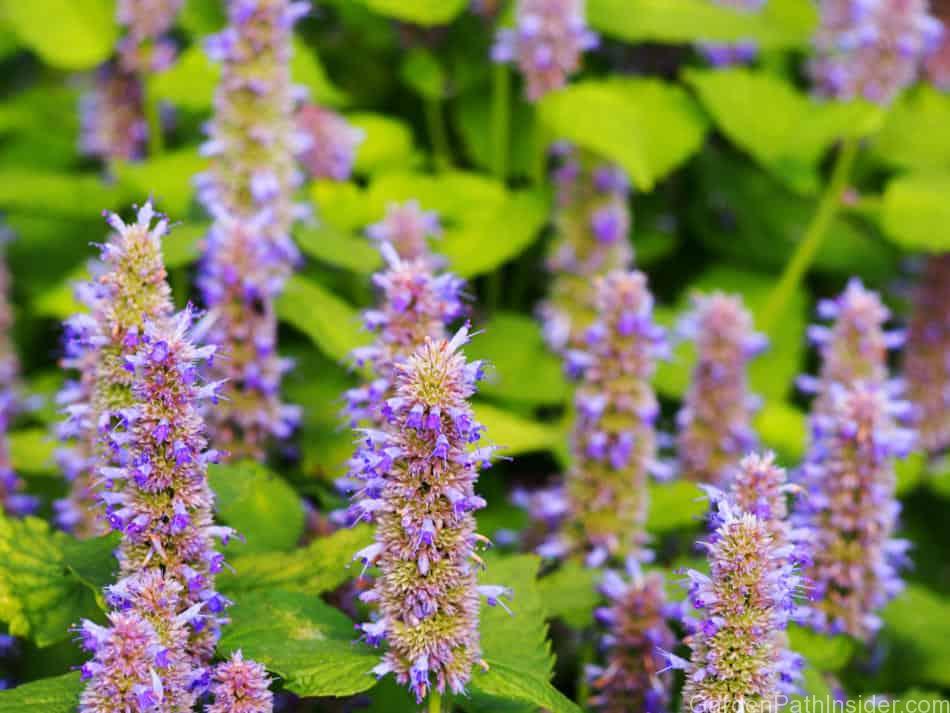
| ANISE HYSSOP | |
| Name: | Anise Hyssop, aka Mint Hyssop |
| Binomial Name: | Agastache foeniculum |
| Life Cycle: | Perennial |
| Sun Needs: | Full sun |
| Soil Needs: | Well-draining nutrient-rich soil can also thrive in sandy soils |
| Water Needs: | Maintain moist soil, check soil daily |
| Bloom Time: | Blooms Summer through Fall |
| Hummingbird Benefits: | Agastache provides nectar to Hummingbirds |
| Facts: | Use caution! This plant is a member of the Mint family which are invasive species. |
| Agastache is also known as Hummingbird Mint | |
| Deer resistant |

| Butterfly Weed | |
| Name: | Butterfly weed |
| Binomial Name: | Asclepias tuberosa |
| Life Cycle: | Perennial |
| Sun Needs: | Full sun |
| Soil Needs: | Well-draining sandy soil |
| Water Needs: | Keep soil on the drier sandy side, water as the soil becomes dry |
| Bloom Time: | Early Spring through late Fall |
| Hummingbird Benefits: | Butterfly Weed provides nectar to hummingbirds |
| Facts: | This deciduous herb can grow up to 24 inches tall (60 cm). |
| Deer resistant | |
| This plant also attracts butterflies | |
| Use caution! This plant can be toxic if consumed and should be planted with care. |

| Begonia | |
| Name: | Begonia |
| Binomial Name: | Begonia x semperflorens-cultorum (Pink Begonia) |
| Life Cycle: | Perennial |
| Sun Needs: | Full sun, partial sun, shade depending on the specific variety |
| Soil Needs: | Well-draining nutrient-rich soil |
| Water Needs: | Maintain moist soil, check soil daily |
| Bloom Time: | Blooms Summer through Fall |
| Hummingbird Benefits: | Begonia provides nectar to hummingbirds |
| Facts: | There are more than 1,800 species in the Begoniaceae family |
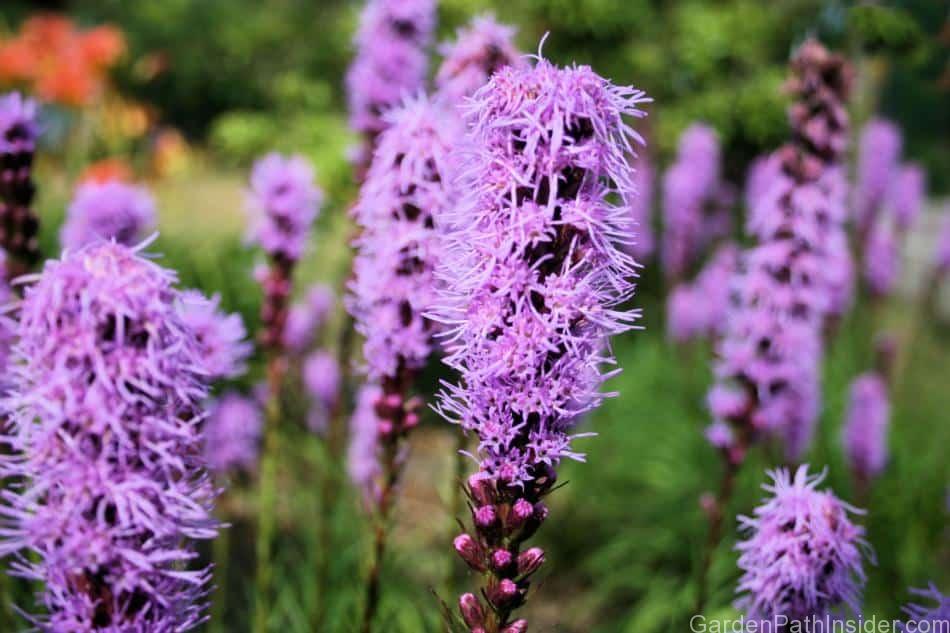
| Blazing star | |
| Name: | Dense blazing star, prairie gayfeather |
| Binomial Name: | Liatris spicata |
| Life Cycle: | Perennial |
| Sun Needs: | Full sun |
| Soil Needs: | Well-draining nutrient-rich soil |
| Water Needs: | Maintain moist soil, check soil daily |
| Bloom Time: | Summer through Fall |
| Hummingbird Benefits: | Liatris provides nectar for hummingbirds |
| Facts: | Liatris can grow over 4 feet tall (1.2 meters) |
Click Below To Continue The Journey On The Next Page!
Please note: While we have worked to provide the most accurate information, climate and growing location will impact the size, height, bloom-time, annual/perennial status, and may impact color. We have gathered this data from personal experience, with online resources used for additional clarification. Additional references include google and usda.gov
